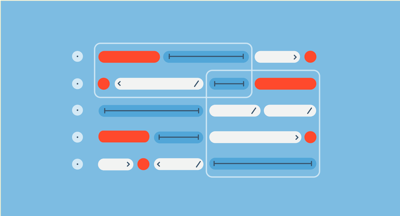October 30, 2024
 by Geosley Andrades / October 30, 2024
by Geosley Andrades / October 30, 2024

Gone are the days when writing test automation meant hours of coding and debugging.
Now, AI copilots are the shoulders to lean on. They generate test cases, spot potential issues before they become problems, and improve code quality. Basically, it’s like having a second brain that speaks in code.
Yet, an AI copilot comes with its share of questions. As more people integrate it into their testing workflows, we need to understand its promise and pitfalls for testing and testers alike.
Let’s unpack this together.
Copilots for test automation are stirring up excitement and debate among the software testing and quality assurance (QA) community. While some testers swear by them, others are skeptical and questioning whether AI copilots will replace them.
But before we discuss the burning questions and strategies, let’s examine what AI copilots are.
AI copilots are tools powered by large language models (LLM) and generative AI that can seamlessly integrate into existing software ecosystems. An AI copilot for testing helps with test case writing, code snippet generation, and even discovering potential issues that may develop. This technology improves coding efficiency by using machine learning (ML), natural language processing (NLP), and advanced analytics.
An AI copilot can adjust its suggestions to align with user intent and logic, providing a clear picture of what developers are trying to achieve in their code. To do this, it uses highly sophisticated ML algorithms that estimate the most likely steps in the code based on a sequence of actions and common programming patterns.
Thus, AI copilots accelerate code generation, streamline problem-solving, and simplify test creation.
Furthermore, AI copilots make it easier for developers and testers to experiment with application programming interfaces (APIs) by automatically generating documentation. This enables users to discover what an API has in store for them and offers help by eliminating manual searches.
With these capable AI-driven assistants helping with a range of tasks, from summarizing daily updates to analyzing complex datasets, testers can now spend more time on high-impact, strategic initiatives.
Understanding how copilots for test automation work can be broken down into three steps.
In today's experience-driven marketplace, the demand for delivering high-quality software quickly is immense. This leads to a shorter software development lifecycle (SLDC) and, in turn, puts pressure on developers for quick, dependable testing.
AI copilots, along with traditional non-AI copilots, thus become critical components of the QA testing process. While non-AI copilots help automate repetitive tasks and manage workflows, AI copilots take it a step further with ML and advanced analytics to automate more complex processes like detecting defects and generating insights.
This distinction is important to understand because non-AI copilots have limited capabilities and stick to basic automation, while AI copilots can predict, analyze, and adapt based on evolving patterns in real time.
As AI continues to evolve, the role of AI copilots in QA testing will definitely continue to grow. They will allow companies to test software more comprehensively and accurately, handling a higher volume of tests than ever before.
Using AI copilots for testing brings about many benefits. While enhanced efficiency is a great advantage, it also allows testers to move beyond their roles from executors to more strategic oversight.
Let's look at some of the main advantages:
Like with any technology. There are the good sides and the bad sides. Understanding the challenges that come with using AI copilots would be the key to creating a sustainable approach to using it in test automation.
So, what are these challenges? Let’s take a look.
This is probably something commonly heard ever since AI exploded onto the tech scene. Humans bring in the sort of contextual thinking and out-of-the-box strategies that currently AI technologies don’t have.
So, it becomes all the more important to balance AI tech and automation with human oversight.
Companies must take a balanced perspective when embedding AI into test automation. Be reasonable and understand the checks and balances that are needed when using this technology. Keep in mind that while AI does indeed offer significant benefits, human oversight is required to avoid the over-reliance traps.
So we pretty much answered the burning question about whether AI copilots will replace human testers. These tools will not replace but expand on the skillsets and talent of these testers.
Human testers bring analytical thinking, imagination, and contextual awareness to the testing process, allowing them to make ethical decisions, navigate complex scenarios, and ensure the final product fulfills real-world needs. AI copilots will complement this with repetitive task automation and faster, more accurate process improvements.
The collaboration of AI and humans will ultimately improve the overall work experience.
As AI advances, the future of copilots in test automation is filled with potential. Here's what we can expect:
In the coming days, copilots will become more embedded in the QA process, impacting various aspects of testing, such as:
Read more: The Future of Software Testing With AI →
AI-powered copilots are all set to take the world of test automation by storm. Embracing this allows companies to become future-ready and stay ahead of the competition.
Implementing this technology can be challenging, but the challenges can be addressed through thorough process oversight and cautious implementation.
Once successfully executed, AI copilots can transform a company's test automation processes and drive accurate and continuous application delivery.
Ready to bring AI into your software development process but unsure where to start? Check out this step-by-step guide to make adoption seamless and effective.
Edited by Shanti S Nair
Geosley is a test automation evangelist and community builder at ACCELQ. Being passionate about continuous learning, Geosley helps ACCELQ with innovative solutions to transform test automation to be simpler, more reliable, and sustainable for the real world.
ChatGPT paved the way for a new world where we can confidently say that AI is here to stay.
 by Hy Nguyen
by Hy Nguyen
Innovation sits at the heart of software automation.
 by Dibyani Das
by Dibyani Das
We presume writing and compiling software programs is easy. But it's not.
.png) by Shreya Mattoo
by Shreya Mattoo
ChatGPT paved the way for a new world where we can confidently say that AI is here to stay.
 by Hy Nguyen
by Hy Nguyen
Innovation sits at the heart of software automation.
 by Dibyani Das
by Dibyani Das


